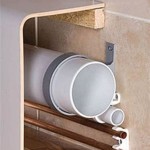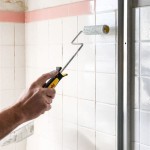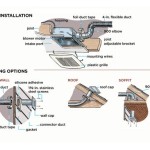How To Paint Oak Bathroom Cabinets
Painting oak bathroom cabinets can dramatically update the look of a bathroom without a complete remodel. However, oak, with its open grain and tendency to bleed tannins, requires careful preparation to achieve a smooth, professional-looking finish. This guide outlines the necessary steps and materials for successfully painting oak bathroom cabinets.
1. Gather Necessary Materials and Tools
Before beginning, assemble all required materials and tools. This prevents interruptions and ensures a smooth workflow. Essential items include:
- Screwdriver
- Painter's tape
- Drop cloths
- Sandpaper (120-grit, 220-grit)
- Tack cloth
- Wood cleaner/degreaser
- Primer specifically designed for wood
- High-quality paint suitable for cabinets (latex or oil-based)
- Paintbrushes (high-quality angled brush recommended)
- Paint roller and tray
- Mini foam roller for detail work
- Wood filler
- Putty knife
- Safety glasses and gloves
2. Prepare the Work Area
Proper preparation of the work area is crucial for protecting surfaces and achieving a clean finish. Remove all items from the bathroom countertops and clear the area around the cabinets. Protect countertops, floors, and adjacent walls with drop cloths. Adequate ventilation is also essential, so open windows and use a fan if necessary.
3. Remove Cabinet Doors and Hardware
Remove all cabinet doors and drawer fronts. Label each piece and its corresponding location on the cabinet frame to ensure easy reassembly. Remove all hardware, including hinges, knobs, and pulls, and store it safely. This allows for thorough painting of all surfaces.
4. Clean and Degrease the Cabinets
Thoroughly clean all surfaces of the cabinets, doors, and drawer fronts with a wood cleaner or degreaser to remove any dirt, grime, or grease buildup. Oak cabinets, especially in bathrooms, can accumulate residues that interfere with primer and paint adhesion. Rinse with clean water and allow to dry completely.
5. Fill Holes and Imperfections
Inspect the cabinet surfaces for any imperfections, such as holes, dents, or scratches. Fill these imperfections with wood filler using a putty knife. Allow the filler to dry completely according to the manufacturer's instructions, then sand smooth with 220-grit sandpaper.
6. Sand the Cabinet Surfaces
Sanding is a critical step, particularly with oak cabinets. The goal isn't to remove all the existing finish, but to create a slightly roughened surface that allows the primer to adhere effectively. Begin with 120-grit sandpaper, then follow up with 220-grit sandpaper for a smoother finish. Pay close attention to sanding in the direction of the wood grain. After sanding, thoroughly wipe down all surfaces with a tack cloth to remove any dust.
7. Apply Primer
Applying a primer specifically designed for wood is essential, especially with oak. Primer helps to seal the wood, preventing tannins from bleeding through the paint and creating a uniform base for the topcoat. Apply a thin, even coat of primer to all surfaces of the cabinets, doors, and drawer fronts. Use a high-quality brush for detailed areas and a mini foam roller for flat surfaces. Allow the primer to dry completely according to the manufacturer's instructions.
8. Apply the Topcoat
Once the primer is dry, apply the topcoat of paint. Choose a high-quality paint designed for cabinets, such as a latex or oil-based enamel. Latex paints offer easier cleanup and lower VOCs, while oil-based paints provide greater durability. Apply thin, even coats, allowing each coat to dry completely before applying the next. Typically, two to three coats are needed for optimal coverage and color saturation. Use a high-quality angled brush for detailed areas and a mini-foam roller for smooth, flat surfaces. Light sanding with 220-grit sandpaper between coats can help to create an ultra-smooth finish.
9. Reassemble the Cabinets
After the final coat of paint has dried completely, carefully reassemble the cabinet doors and drawer fronts, using the labels created earlier. Reinstall the hardware, ensuring everything is aligned correctly. Allow the paint to cure fully for several days before subjecting the cabinets to regular use.

5 Ideas How To Update Oak Or Wood Kitchen Cabinets Part 1 Painting Bathroom

Painting Bathroom Cabinets Sometimes Homemade

14 Inspiring Bathroom Cabinet Makeovers To Try Hometalk

Transform Your Bathroom Vanity In A Weekend Making Pretty Spaces Blog

How To Paint Bathroom Cabinets Without Sanding 8 Vital Steps Grace In My Space

Before And After Bathroom Vanity Cabinet Painted Oak With 2 Coats Of Behr A Painting Cabinets Makeover Remodel Shower

How To Paint Bathroom Cabinets Secrets For A Perfect Finish

Bathroom Makeover On A Budget How To Paint Cabinets Simply2moms

Painted Bathroom Vanity One Room Challenge Week 3 Momhomeguide Com

7 Easy Steps To Paint Bathroom Cabinets Without Sanding Cottage Living And Style
Related Posts







